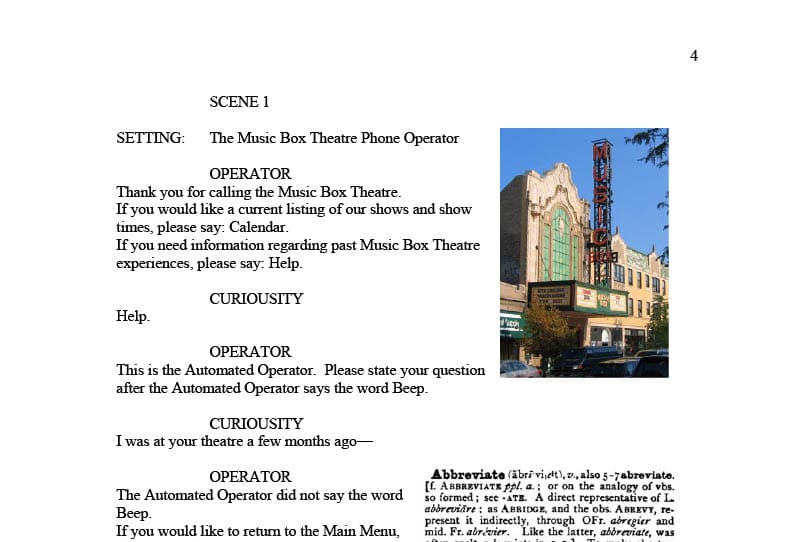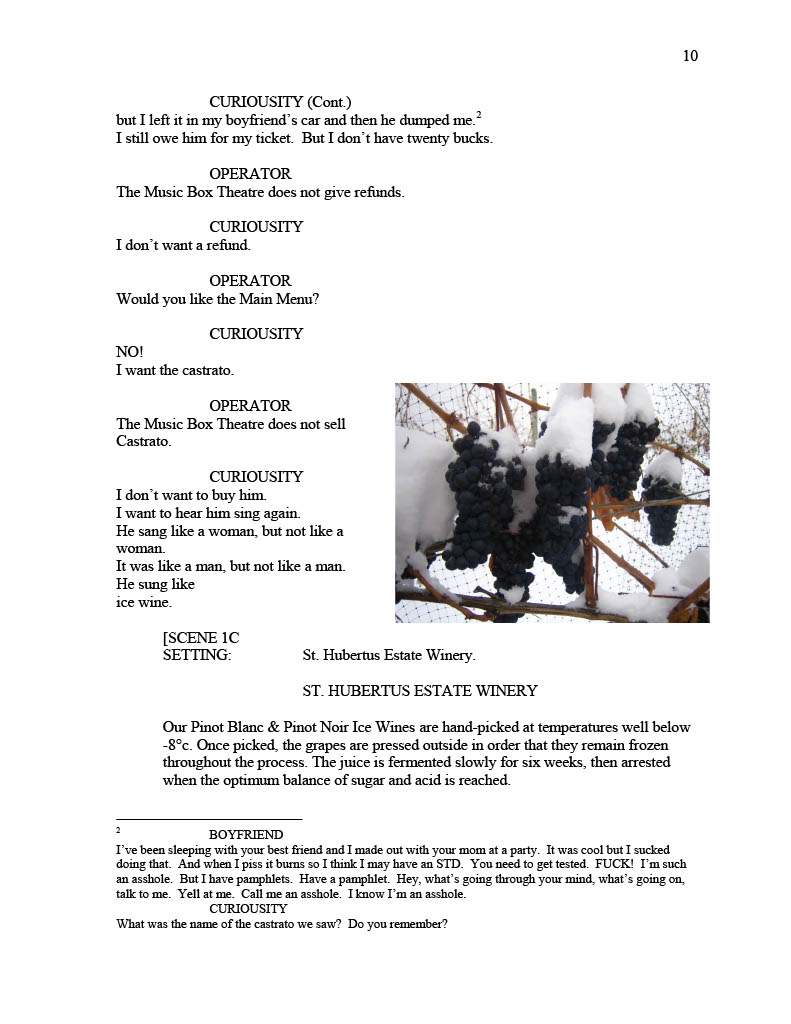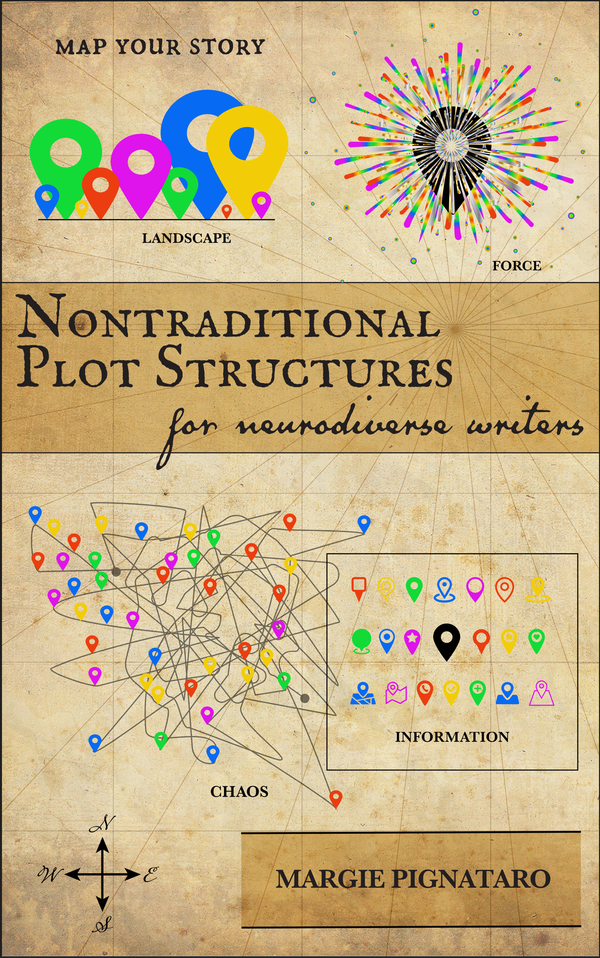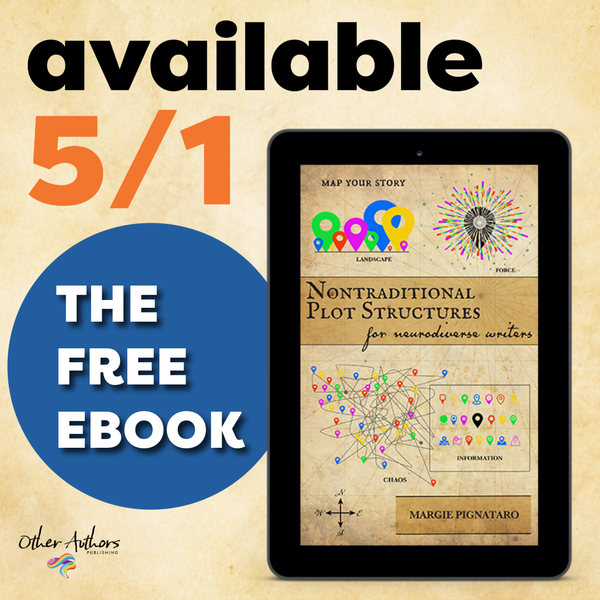Fragments of Chaos: Organizing Chunks of Random Notes Into Whole Stories

I wrote a post on Instagram asking for neurodivergent writers to talk to me about their notebooks. Every neurodivergent writer I've ever talked to has had a trove of notebooks filled with ideas and partially written stories. I asked each person who generously responded about their notes, how they felt about them and what kind of notes they had.
I realized I needed to demonstrate exactly what I'm talking about when I talk about Chaos. I've included in this post an example of a Chaos play I wrote and was produced in order to demonstrate the form.
I've also included my own notebook-sourced Chaos story. It has surprised me and disturbed me a little with the subject matter. But there is a very obvious String that threads through the piece.
But first, the play.



Chaos is easiest when you have all of the chunks ready to go. They don't have to be connected necessarily, nor do they need consistency. I've written Chaos plays with no written chunks to play with. I did have a good idea what I would write and let it flow. I'm frankly surprised how much easier it was to write than a Journey structure. The plays weren't perfect, but I had positive reception (for the most part).
I have attached a copy of my script Solve for Castrato(k), or Fatal to the Cause of Truth as an example of a Chaos structure. I had no overall plan when I started writing this script. This was based on an event that happened to me after seeing a movie called Brand Upon the Brain at the Music Box Theater in Chicago. It has a Chaos structure, but it's also obsessively focused on Information.
The story centers on a phone call between the main character, Curiousity, and an automated operator. Curiousity only wants to find the castrato she saw perform at a showing of Brand Upon the Brain. She never accomplishes this. The story has flat characters (a winery, the Accident Reconstruction Network, a Philosopher of Ethics and Aesthetics), no answers to any questions posed, sub-scenes, images, an author's note that is performed, footnotes, and sock puppets.
Solve for Castrato (k)* or, Fatal to the Cause of TruthDownload
It isn't necessary to read the entire script (though it is 24 pages) to see the Chaos structure.
I discovered one thing about Chaos with this play: it doesn't function as well as a performance. The information comes too fast and leaps about in the most ADHD manner. Audiences can get lost instantly, though, I got few complaints about this.
Confusion can be fun.
Arranging Fragments
I don't take notes in a traditional way. Most neurodiverse people I've talked to write ideas out in notebooks, even on random pieces of paper.
Rather, what I do is bookmark websites. (In the world before the internet, I remembered everything.) In order to construct a story out of fragments, I went back through my saved websites, picked the ones that appealed to me, and then wrote whatever I thought about that subject. I used Google Keep and found it exceptionally organized. Also, my husband and I were watching Histories Greatest Mysteries and I found myself taking regular notes during the show.
This was a difficult undertaking at first. I'm not going to soft pedal it. Perhaps it was because I had to create text from my "notes", the websites. But then once I got the fragments together, I definitely saw a shape forming. I wrote additional material. What I have now is by no means finished, but it is what I've been talking about.
If you have any feedback about the story, which I'll entitle "Tea Tephi", please contact me or comment. As always, thanks for reading.
Tea Tephi finds the skeletons at the lake. Piles of bones and skulls caught in a thick ice layer. She crouches, She examines, she analyzes, she catalogs, she questions, she wonders, she darkens, she fails to understand, she seems guidance, she interprets, she refocuses, she finds a different tact, she rejects, she concludes, she moves on.
***
Where is it? I can see it. I think I see it. The suggestions of wings, feathers, possibly a body supporting the entire figure. Those slivers of green between the narrow bird wings. Is that a person or just the suggestion of life lurking within the impotent blackness.
***
The Sargasso Sea. Hydrogen sulfide makes the brain mad.
Violently and emotionally question the theory of relativity and the personal selfish motivations of Silly Hawkman.
The mind. The senses. The might. The will. The perception of God. The absence of God. This is the mercy.
***
Blackbeard the Retired Pirate in his vegetable garden. Staring at potatoes. A servant dogs them out of the earth and tosses them in a basket. Blackbeard watches this, standing a foot away, and clenching his fists. When the last is dug out, Blackbeard seizes the basket and takes it down to the beach. He throws each potato into the sea, blessing each.
When he has no more, he sits beside the basket and weeps. Then, his young wife is beside him. He is an old man with a young wife.
His wife said, "Perhaps returning to the sea would do you good. Not that you need engage in piracy...."
Blackbeard the Pirate looked up at her, his face shining with tears.
All he said was "Aye." He left the next day.
***
Tea Tephi at the icy lake, crouching and staring at piles of bones. They’re chaotic.
Tossed about, even There are stacks of sternums, sculptures skulls in circles in the dirt wet with melting snow.
This can’t be entirely from violence, she whispers. There are so many arrangements, reminiscent of the Paris catacombs, this must be a celebration of sorts.
18,000 feet high. This is inaccessible and relatively unknown.
Perhaps it’s a joyful madness. The skeletons can’t be seen in terms of suffering. People break for a while. Not long. The less oxygen contributes. It’s hardly noticeable. The people make musical instruments, build walls, pretend to play war. They juggle skulls and name them and have vast conversations, begging for all the details of their lives.
They pretend to have high tea with the bones, faking aristocratic accents. The wind picks up, as sharp as frozen Damascus knives with patterns that look like blood drops.
The generous, witty hosts suddenly feel hot. The wind makes their skin burn.
They go for a swim with the bones. It becomes a briefly flirtatious experience.
Until they fall asleep.
***
Madame Tussaud making wax sculptures of convicted, executed criminals. Constantly, compulsively, talking very little.
She arrives in London, husbandless, but with the title of "Madame", prompting inquiry
"chanters" in the Victorian style of newspaper sellers give stories about contemporary killers who have committed heinous acts
awful, bizarre, fucked up real crimes with images that are picked to make someone squirm
bestiality, incest, cannibalism, incest, rape, etc.
The constant remaking of criminal faces and bodies, the collection of evidence and the construction of crime scenes for her museum become a ritual of trauma.
Actors play all of the wax statues, though there not necessarily be dialogue from them. Gray hair spray paint and gray makeup should do. We only need them from the neck/shoulders up
Tussaud wants to make Jack the Ripper's face. After the killings have stopped, she thinks he's dead and it's "safe" to find him. She had been researching him secretly via street urchins, and manages to track down people who say they know him or know of areas where he might be found.
She collects artifacts of his, hair, comb, snuff box, cravat, matches, etc.
detective/police/reporter character? Someone investigating her?
Perhaps husband left behind in Paris is searching for her?
French police or government looking for her because of her role in the revolution?
Man trying to fuck her?
Woman in drag researching her
actual husband pursuing her, whom she doesn't recognize
lawyer looking for her to tell her husband is dead
***
A queen taken to Ireland and mated with a king.
The exchange of breeding partners.
Neanderthals seemed to have this practice: the women given to newly acquainted tribes.
Always seen from the male point of view. The assumption that people always see women as a commodity to be exchanged to attain political power.
Why not the women go willingly, even enthusiastically? They become like diplomats--or queens--and explore a new culture.
It's more logical to trade men. Like a sperm donation. Breed strong men.
Women are too precious. Perhaps they were special exchanges. Perhaps there was love. Perhaps it wasn't any different than what we do, what people have always done: Get excited and fuck.
Roanoke: that's what they did. Move south and fuck the natives. You can't keep people from fucking each other, no matter what differences are perceived.
So Tea Tephi: the native queen who willingly went to Ireland and was eventually buried in the most sacred of all Irish lands.
Tea Tephi: the young wife to the old man Blackbeard, who told him to return to the sea because he was becoming unstable, depressed, paranoid, and just annoying.
Tea Tephi: the escape artist Harry Houdini trained to destroy his competition, Minerva.
Tea Tephi: the vampire child buried bound in chains, a stake through her heart, her mouth stuffed with garlic.
Tea Tephi: the tightrope walker who wore skin tight leotards and lived above the heads of a thrilled crowd. Who tread the thinnest rope whilst thinking about Blackbeard and Ireland and Roanoke and the vampire child and Harry Houdini and the deepest, chthonic desire to fuck.
***
The Tightrope Walker. Its own Tarot card. An It rather than a Them or He or She. The brightest light in a circus that is as dark as an alley between moldering buildings. Middle of the night, you're alone, but you know you're not. Even if you look and are awake and aware, you can't see everything.
***
The imprint of panic: a child padlocked in its grave. The child pale, fair, unable to handle the sun without burning. Gaunt and bony. Already looking like a skeleton with skin stretched over it. The child hissing at adults and throwing rocks and howling. It screams in the night and kills cats and eats them occasionally. It's seen often with blood around its mouth and chin, walking through the town with the nonchalance of a woman wearing lipstick.
People wanted an excuse to take it out. They already discussed what they would do WHEN the child died. Cut off its head, fill the mouth with garlic, chain it to its coffin. The child was sick and it seemed to unnerve the town more. They knew they had to act fast because death would only make it stronger.
Then other children grew pale and gaunt and sick. Several died. But the parents guarded their graves, not allowing the panicked town to "save the child's soul".
But this child: the child who had begun all of this horrifying madness: no parents or grandparents or siblings or cousins or uncles were going to stand in the way. The townspeople stood in the house and watched the child die and snatched the corpse.
Uncles and cousins and the father and mother attempted to stop them. Three of the family died in the brawl, and the townspeople had their way and bound the child in its grave and made sure it would never hunt people ever, ever again.
Of course, children continued to get sick, as well as adults, but there was no one else to blame, so the townspeople just prayed that God would help. After half the town died, the illnesses stopped and they praised God for His Benevolent Mercy for sparing them.
***
Just because people lived in the past, it does not mean they're stupid.
Hindsight Bias: because we're in the present, we're at the smartest point of human existence. We've learned from the mistakes and poor judgment of the past.
Everything we do and are and accomplish is superior and moral and right.




